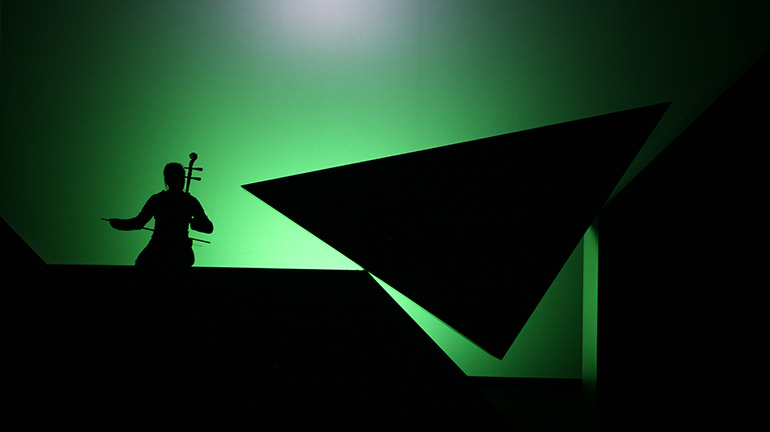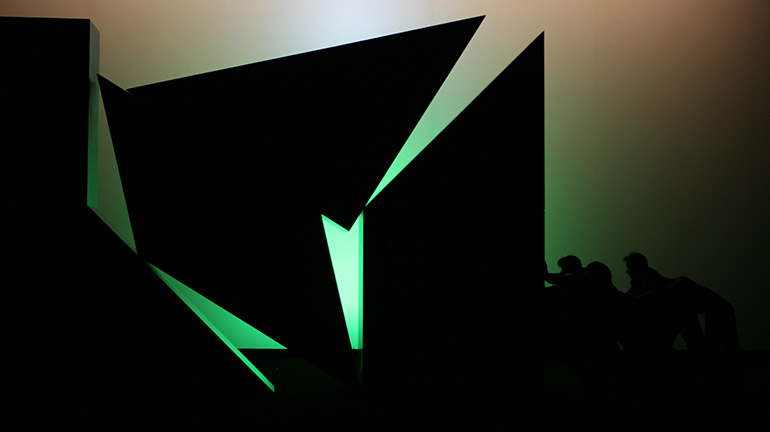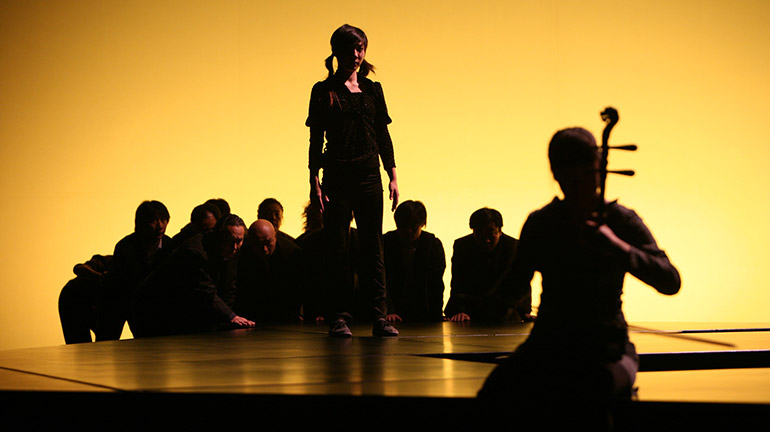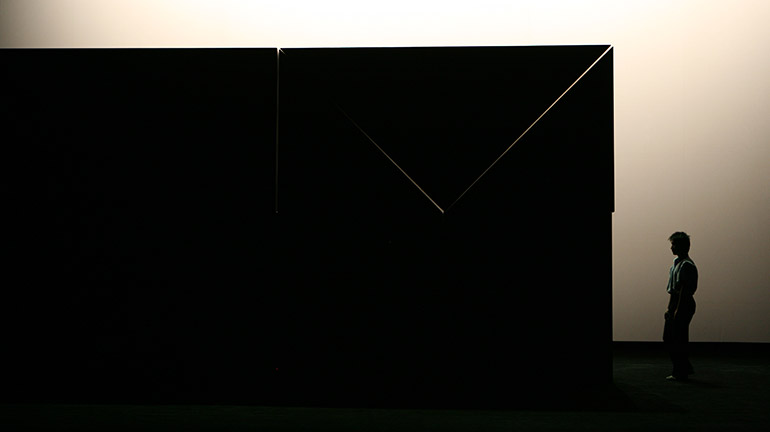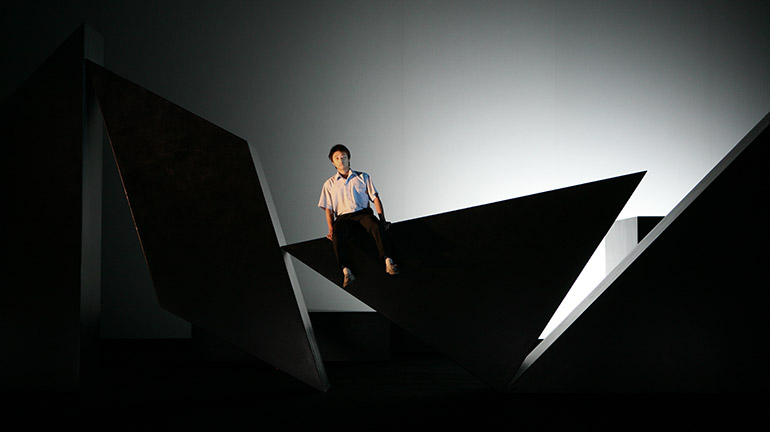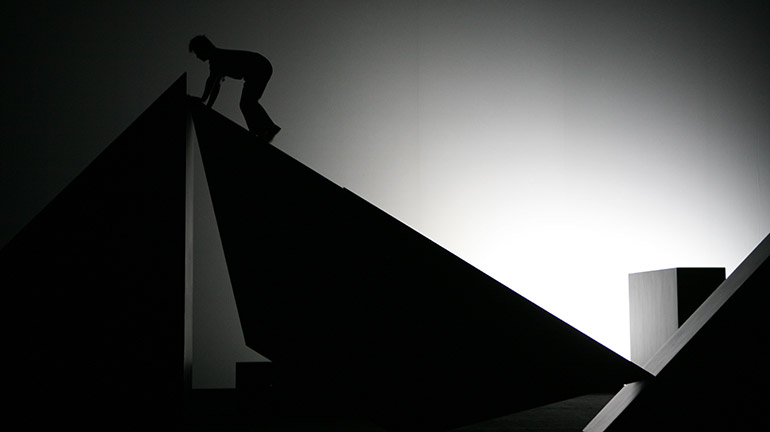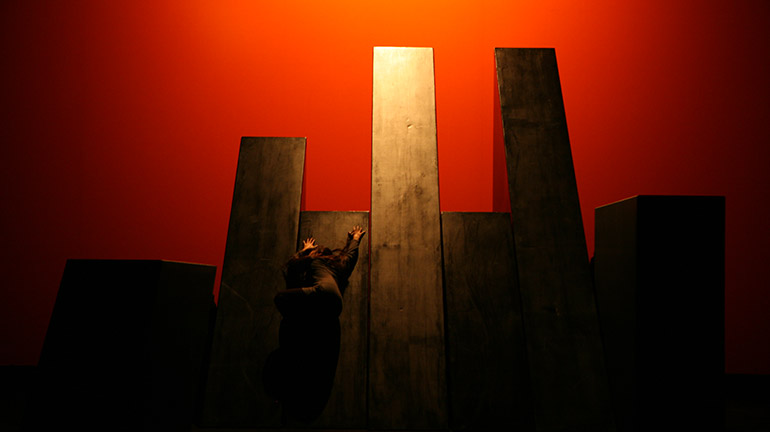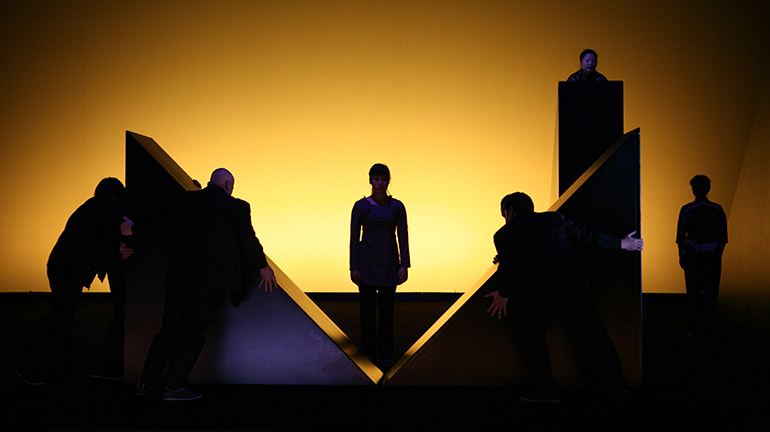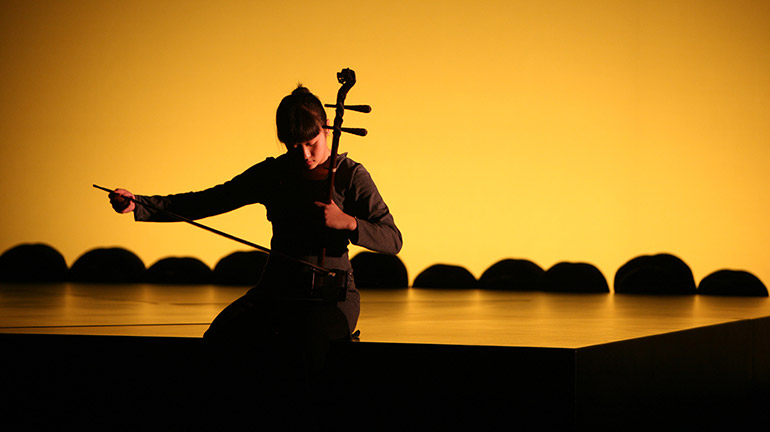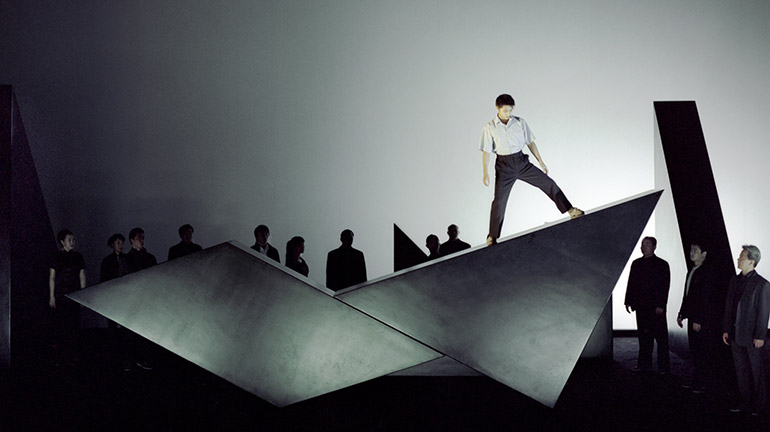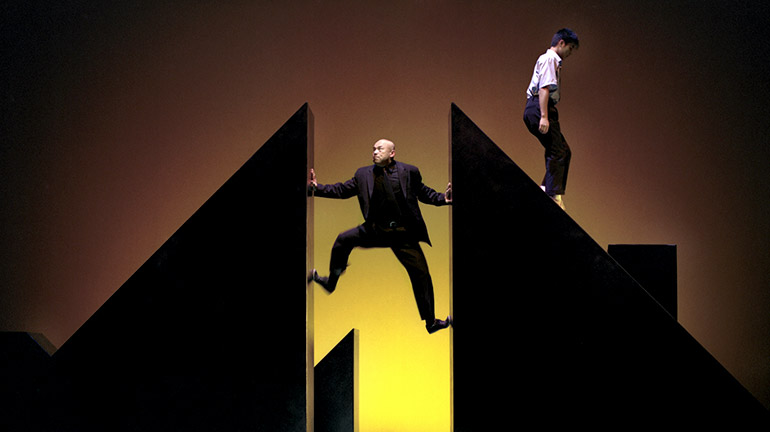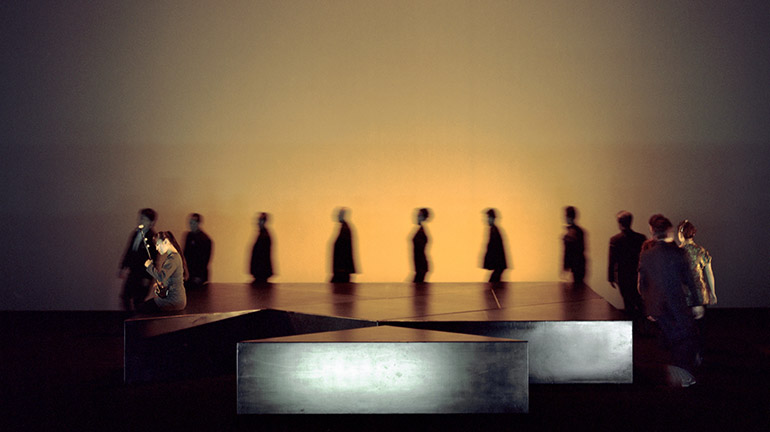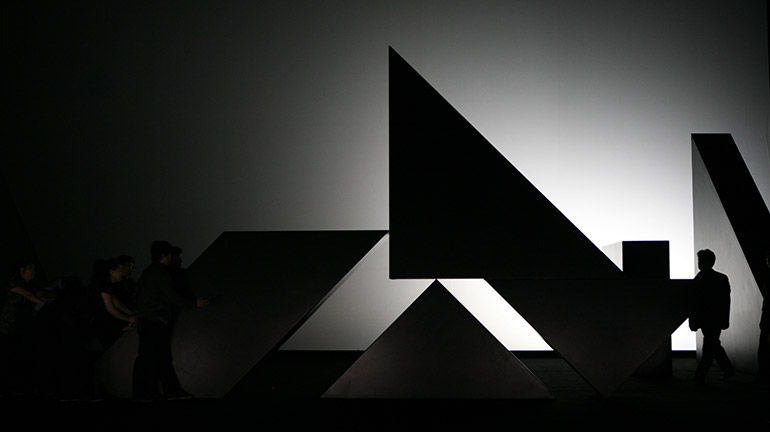de page
The 7 Boards of Trickery
The 7 Boards of Trickery
(creation 2007)
Geometry is what inspires my work, most probably because the stage is first and foremost a space in which any form of action is subject to the laws of general mechanics. The stage is a place of fiction, where poetry is related to the dialogue between Man and space. Between what is human, and what is not. This is what led me to search geometry for a starting point to my work. It was also a way of moving my meeting with the Chinese artists onto neutral ground: mathematics, a major science in Chinese thought as well as Western culture.
China
A foreign land par excellence, for me going to China also meant going to the source of ancestral knowledge, more particularly in terms of the human body. As the oldest living civilisation, from the very outset China has seen the world as a whole, as indeed it also sees Man, with great importance given to the human body. Consequently, the actors who belong to the Beijing Opera use their entire bodies through dancing, acrobatics and singing. This acting versatility is also a quality I have always sought for in my own actors, new and old alike.
The game
Why the game? Here’s a definition I found on the Wikipedia website which seems quite apt: “A game is a way of representing the world. Thus, a game transposes systems of values or abstract formal systems into concrete objects. From this point of view, a game can be seen as a metaphor of the world, each game you play being a form of work of art.”
Photo © Jean Dieuzaide
The Seven Boards of Skill
I chose to draw my inspiration from Tangram, a Chinese game they call Qi Qiao Ban, which quite literally means The Seven Boards of Skill. The game, which goes back to antiquity, is a seven-piece puzzle, the numerous combinations of which are of great geometric interest. It could be said that the way these pieces have been cut contains the foundations of Chinese thought. It has strong metaphorical, recreational and emotional power.
Theatre tectonics
On stage, the pieces of the game become blocks. They slide against each other, rising to form mountains and towns and the opposing forces give rise to shapes suspended in unlikely equilibrium. Rifts, drops and breaches define Man’s position. The Seven Boards of Skill follow a tectonic movement, a slow yet inevitable movement, an ever-changing future that human beings activate but are also subjected to.
Aurélien Bory, April 2008
The visible shifts of the earth’s crust are the product of movements resulting from a reduction in our planet’s volume. They tend to break down in horizontal and vertical movements.
Eduard Suess
The perfect number is one that excludes any idea of counting.
Anonymous, Chinese, quoted by Paul Claudel
Distribution
With Sun Ruichen, Yu Yingchun, Ding Hong, Jiang Huimin, An Liming, Chen Jianhui, Liu Yu, Qu Aiguo, Tan Zuoliang, Li Liang, Wang Wentao, Zhang Deqiang, Che Hu, Zhang Benchuan.
Design, scenography and direction Aurélien Bory
Artistic collaboration Pierre Rigal
Direction assistants Evita De Ayguavives, Hugues Cohen (alternately)
Light design Arno Veyrat
Music Raphaël Wisson
Sound design Stéphane Ley
Added musique Arvo Pärt
Costume designer Sylvie Marcucci
Technical scenery design Pierre Dequivre and les ateliers de la Fiancée du pirate
Head maker Arnaud Lucas
Patina Emily Battersby, Charlotte Delion, Charles Martel
General technic Arno Veyrat
Sound technic Joël Abriac
Light engineer François Dareys
Head of Production Florence Meurisse
Production manager Clément Séguier-Faucher
Press Plan Bey Agency
DELEGATED PRODUCTION UNTIL JUNE 30TH 2010 Scène de la Terre – Jean-Luc Larguier
PRODUCTION OF THE RESUMPTION IN 2015 Compagnie 111 – Aurélien Bory
COPRODUCTION OF THE REALISATION IN 2007 Théâtre de la Ville – Paris, Direction de la Culture – Ville de Dalian, Equinoxe – Scène nationale de Châteauroux.
Residence Scène nationale de Sénart
With the support of Ministère de la culture/Direction Régionale des Affaires Culturelles Languedoc-Roussillon-Midi-Pyrénées, Région Languedoc-Roussillon-Midi-Pyrénées, Ville de Toulouse, Institut Français.
Help to the resumption in 2015 Le CENTQUATRE-PARIS



